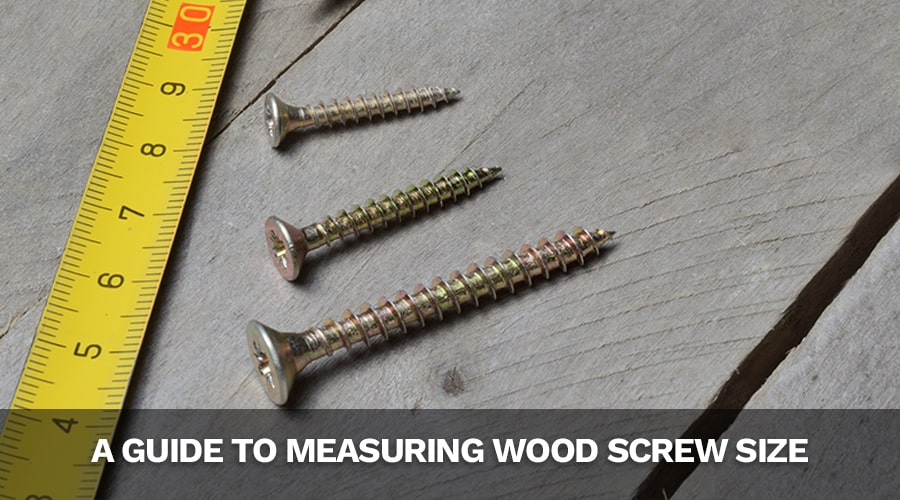


Wood screws are essential elements of woodworking that provide essential support to countless projects. It’s important to know about their size to make sure things stay strong and secure. This blog will break down the details of wood screw dimensions, especially focusing on stainless steel screws. We’ll go into how to measure their size, why looking at a screw size chart is helpful, and why using different lengths of screws matters depending on the job you’re tackling. So, let’s dive in and make understanding wood screws a breeze.
Wood screw dimensions are not a one-size-fits-all affair. They encompass a range of factors that determine their size and compatibility with specific projects. The key aspects of wood screw dimensions include the diameter, length, and threading.
Diameter:
The crucial factor in a wood screw is its diameter, identified by the gauge number. This measurement usually falls between 2 and 16, with lower values representing greater thickness, and holds substantial importance in the selection procedure. Stainless steel wood screws, known for their corrosion resistance, come in different gauges to serve various purposes. To ensure a firm & secure connection, it is mandatory to check the screw’s diameters.
Length:
The lengths of wood screws vary to accommodate the diverse requirements of woodworking projects. Typically, the length of a wood screw is measured from the tip to the base of the head. Wood screws are preferred for their durability, making them an excellent choice for outdoor or high-moisture environments. Longer screws offer increased holding power, making them suitable for thicker materials or when a stronger connection is necessary.
Threading:
The threading of a wood screw constitutes another crucial dimension. Wood screws can exhibit different threading patterns, such as coarse and fine threads. Coarse threads are more aggressive and work well in softer materials, whereas fine threads are ideal for hardwoods and dense materials. Wood screws often incorporate sharp threads, ensuring an excellent grip and minimising the risk of wood splitting.
Accurate measurement plays a major role in choosing the appropriate size for the wood screw for your projects. To effectively measure wood screw dimensions, adhere to the following steps:
Diameter:
Utilise a calliper or screw gauge to measure the diameter of the screw’s shank. Align the measured diameter with the corresponding gauge number, ensuring compatibility with the materials involved in your project.
Length:
For measuring the screw lengths, position the screw on a flat surface and employ a ruler or measuring tape to gauge from the tip to the base of the head. Include the entire length of the threaded portion in your measurement. Factor in the thickness of the material you’re fastening, selecting a screw length that permits sufficient penetration without excessive protrusion.
Threading:
Inspect the threading pattern of the wood screw and identify whether it features coarse or fine threads based on the material at hand. Coarse threads are apt for softer materials, whereas fine threads deliver a secure grip in denser woods.
These are widely chosen options for numerous woodworking projects because of their resistance to corrosion and robustness. They are particularly favoured for outdoor applications, where conventional screws may rust and corrode due to exposure to moisture.
When dealing with stainless steel wood screws, it is vital to take into account the specific alloy being used. Common stainless steel alloys include 18-8, which contains 18% chromium and 8% nickel, and 316, which includes additional molybdenum for heightened corrosion resistance. Understanding alloy is important, especially when working in environments characterised by high moisture levels or exposure to salt.
A chart detailing wood screw sizes serves as a valuable reference tool for quickly selecting screws for your project. Typically encompassing details on gauge, length, and suggested applications, consulting a size chart can streamline the process, saving time and ensuring the appropriate screws are chosen.
When utilising a size chart, consider the following recommendations:
Material Compatibility:
The chart often specifies the recommended materials for each screw size. It is essential to verify that the selected screws are compatible with the type of wood or other materials you intend to fasten.
Weight-Bearing Applications:
For applications where structural integrity is paramount, opt for screws with larger diameters and lengths. The wood screw size chart offers guidance on the weight-bearing capacity of various screws.
Pilot Hole Size:
The chart may provide recommendations for specific pilot hole sizes corresponding to different screws. Adhering to these suggestions helps prevent splitting and guarantees a secure connection.
The effectiveness of a wood screw is significantly influenced by its length, and choosing the right length depends on the specific needs of your project. Consider the following situations:
Surface Connection:
For surface connections where screws pass through one material and into another, for example: attaching a wooden tabletop to a frame, opt for a screw length that allows for adequate penetration without protruding through the material.
Joining Thick Materials:
When connecting thick materials, such as constructing a wooden frame, choose longer screws to ensure a robust and stable connection. Longer screws provide increased threading engagement, strengthening the joint’s holding power.
Deeper Connections:
When requiring a deeper connection, like fastening two thick pieces of wood, select screws with lengths that accommodate the necessary depth. This is particularly crucial for structures bearing loads.
Grasping the dimensions of wood screws is essential for the triumph of woodworking endeavours. Whether utilising stainless steel wood screws, traditional choices, finding the appropriate blend of diameter, length, and threading guarantees a steadfast and long-lasting connection. LP Screws Stainless Steel stands out as a one-stop manufacturer, offering the right size of wood screws for various applications.
To streamline the selection process, refer to a wood screw size chart for quick insights, and always employ accurate measurements to align with the specific needs of your project. By mastering these elements, coupled with the reliable offerings from LP Screws Stainless Steel, you’ll be fully prepared to confidently and precisely tackle a broad spectrum of woodworking tasks.